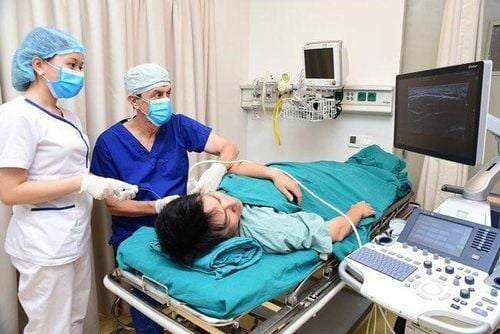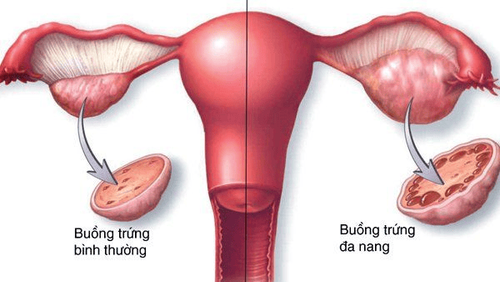This is an automatically translated article.
The article is expertly consulted by an Anesthesiologist, anesthesiologist, anesthesiologist - Department of General Surgery & Anesthesia - Vinmec Hai Phong International General Hospital.Uterine fibroids often appear in the smooth muscle of a woman's uterus due to an increase in the level of the hormone estrogen in the body, which affects the ability to conceive. Therefore, laparoscopic hysterectomy is a simple treatment method and avoids dangerous complications later. Epidural analgesia is the most commonly used anesthetic method in this surgery with some caveats.
1. What is an epidural?
Epidural anesthesia is a regional anesthetic technique performed by injecting local anesthetic into the epidural space, in order to temporarily inhibit segmental nerve conduction through nerve roots, meeting the need for anesthesia. surgery and pain relief.2. Laparoscopic removal of uterine fibroids when?
Laparoscopic surgery is a modern technique that is becoming more and more popular with outstanding advantages over open surgery. However, not all cases of uterine fibroids are indicated for laparoscopic surgery, but this method is usually indicated in the following cases:Tumor size is 50 mm or more and has not caused much bleeding in the uterus, has not invaded the entire uterus; Complicated tumor compresses the abdominal cavity and degenerates; Patients with menstrual disorders, menorrhagia or hormonal instability; Fibroids are located under the mucosa or inside the ligaments; Progressive symptoms suggest malignancy.

Chỉ một số trường hợp có u xơ tử cung được chỉ định mổ
3. Indications and contraindications of epidural anesthesia for hysterectomy
Epidural analgesia can be used as the sole anesthetic technique for lower extremity, pelvic, and abdominal operations. In fibroid removal surgery, epidural anesthesia is very popular and helps reduce postoperative pain. Some contraindications of epidural anesthesia in this surgery are:No patient consent; Patients allergic to local anesthetics; Inflammation of the needle puncture area; Lack of adequate circulating volume, shock; Blood clotting disorders; Not enough time to stop anticoagulants; Tight mitral stenosis, tight aortic valve; Severe decompensated heart failure. After epidural anesthesia, the patient should be monitored for vital indicators such as consciousness, heart rate, blood pressure and oxygen saturation. In addition, consideration should be given to the degree of sensory and motor blockade along with the undesirable effects of epidural anesthesia.
4. Common complications and corresponding locations in epidural anesthesia
4.1 Drug-related complications Allergy to local anesthetics causes anaphylaxis: rare in new-generation local anesthetics, but if this is the case, the patient should be stopped from the anesthetic and used an anti-anaphylactic regimen according to the Ministry of Health. medical. Local anesthetic poisoning due to injecting into the wrong blood vessel: it is necessary to stop the anesthetic, anticonvulsant, respiratory and circulatory resuscitation and intralipid infusion when poisoning with bupivacaine, ropivacaine. 4.2 Complications due to the technique of dural puncture: need to withdraw the needle, change the puncture site or change the anesthesia method; Total spinal anesthesia due to injection of anesthetic into the subarachnoid space: urgent need for respiratory and circulatory resuscitation; Hypotension, bradycardia: treat with vasopressors, atropine and fluid replacement; Headache: keep the patient immobile, give fluids, use analgesics and patch the dura with autologous blood;
Đau đầu là một trong những tai biến kỹ thuật mà bệnh nhân có thể gặp phải
This method has many outstanding advantages:
Instruments with surgical heads act as flexibly as wrist joints to help access narrow corners, increase dissection and cause less damage to adjacent areas. compared with classical laparoscopic surgery. Automated endoscopes through voice, laser, eye tracking, etc., help doctors actively control and have better vision and control, increase accuracy and safety in performing surgery art. With the advantage of compactness, robotic arm surgery is less invasive and has many advantages such as small incisions, less pain, low risk of infection, thereby helping customers to lose less blood during surgery, surgery, and quick recovery. .
Please dial HOTLINE for more information or register for an appointment HERE. Download MyVinmec app to make appointments faster and to manage your bookings easily.













